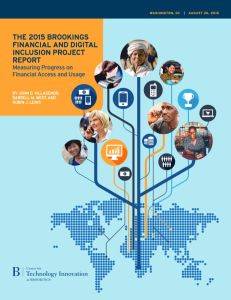
The 2015 Brookings Financial and Digital Inclusion Project Report
Measuring Progress on Financial Access and Usage
Read or listen offline
Amazon KindleRecommendation
While most people want access to the convenience of a formal financial system, only 62% of adults around the world have it, according to this recap of financial inclusion from John D. Villasenor, Darrell M. West and Robin J. Lewis of the Brookings Institution. Their multifaceted analysis measures the availability of conventional banking accounts in 21 emerging economies, as well as their degree of digital capacity to enable mobile money services. getAbstract recommends this in-depth study to economists, government officials, bankers and others involved in the development of formal financial systems in emerging countries.
Summary
About the Authors
John D. Villasenor, a professor at UCLA, is a nonresident senior fellow at the Center for Technology Innovation at Brookings, where Darrell M. West is founding director and Robin J. Lewis is a research analyst.





















Comment on this summary